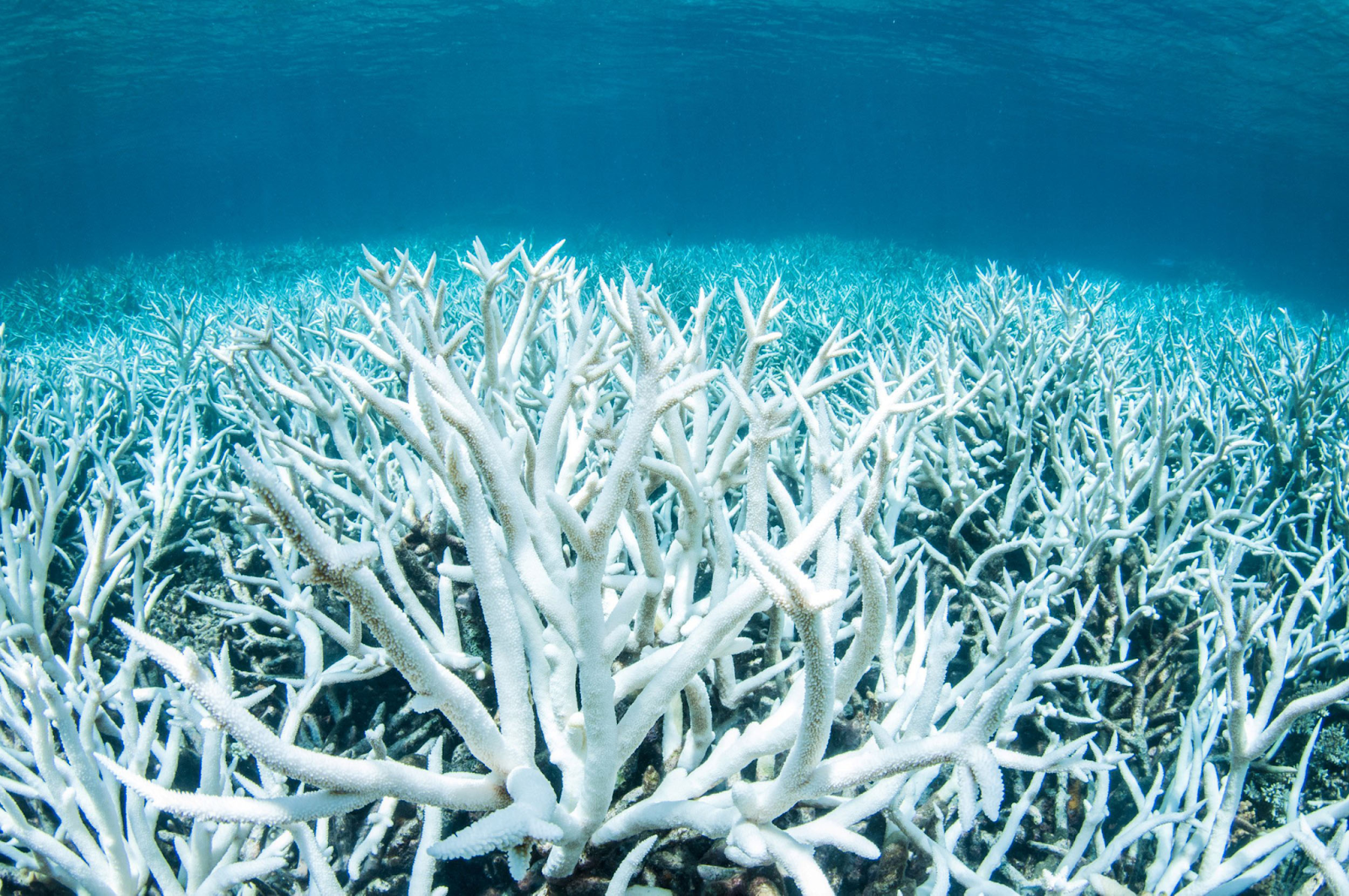The Future of Coral Reefs
Daniel Wang. 07/17/2021

Each year, billions of tourists are drawn to the beauty of tropical shores and flock to places such as the Caribbean for vacation. In this age of information, a simple internet search of coral reefs will result in mesmerizing images of sparkling water filled with patches of multiple shades of green. While most may only associate the words “coral reef” with these images, coral reefs aren’t just natural sights, but they are more importantly, ecosystems that humans depend on. At the InterSTEM Speaker Series presentation, Dr. Garen Baghdasarian, a professor of marine biology at Santa Monica College, explained humanity’s dependence on coral reefs as well as the threats to their survival.
In his presentation, Dr. Baghdasarian first established that coral reefs are indeed organisms. According to LiveScience, coral reefs are structures formed from the skeletons of hermatypic coral, a marine invertebrate. Corals have exoskeletons that provide natural protection from underwater threats. In addition, Dr. Baghdasarian mentioned that coral reefs are the building blocks of clear, shallow water ecosystems as they are an energy source that many aquatic organisms depend on for survival. The coral’s role of being the backbone of aquatic ecosystems is dependent on the symbiotic relationship between the coral and algae. All corals host dinoflagellates, single algae with a flagella that allows the algae to move. The relationship formed between the dinoflagellates and algae allow for the survival of coral in nutrient-sparse areas. The coral will obtain up a large portion of its caloric energy from photosynthetic products made by algae. The algae, on the other hand, will receive micro-nutrients like nitrogen from the corals, as well as an ideal environment for photosynthesis. If this relationship fails, the coral will perish, destabilizing its ecosystem.
In addition to aquatic ecosystems, many human industries also depend on the sustainability of coral reefs. For example, Dr. Baghdasarian also claims that the tourism brought by coral reefs bring several benefits to a nation’s economy. The reef hosts over 25 million aquatic species, providing food for one billion people. The reefs also act as a carbon sink, mitigating many impacts of rising carbon dioxide levels in the atmosphere. Clearly, many aspects of human life depend on services provided by coral reefs.
Unfortunately, climate change is posing a threat to the well-being of coral reefs. Dr. Baghdasarian mentioned that over 90 percent of climate change happens in the oceans, directly impacting the health of coral reefs. This leads to the phenomenon of coral “bleaching,” where coral reefs will turn white while algae living inside the corals die. In fact, the National Ocean Service explains that small changes in ocean temperature, such as a 2 degree Celsius increase, can ultimately lead the corals to expel the algae living in them and turn white. As Dr. Baghdasarian’s research shows, while the bleaching of a coral does not mean that the coral is dead—some can even recover in 4 weeks in ideal conditions—numerous questions still revolve around the process of coral bleaching.
Dr. Baghdasarian hopes to answer the question of what will happen to the coral reefs in the future. He and his team began this research by comparing records of coral reefs 50-100 years ago to the coral reefs today. Their observations matched with the general consensus that rising water temperatures led to this catastrophe; as water temperature increased, more algae perished, eventually leading to greater amounts of coral bleaching. Additionally, the increase in water temperature has also seemed to erode tissue of the coral itself.
One surprising discovery was that in many locations with similar water temperature and pH levels, some corals would be bleached, while others would be completely fine. To find out the reasoning behind this phenomenon, Dr. Baghdasarian compared the different types of symbiotic algae with the hypothesis that some algae may have heat-resistant genes. However, after testing this theory out through his experiments, he concluded that the type of algae was not the factor of coral bleaching as his experimental data showed no correlation between the type of algae present in the coral and the degree of bleaching that the coral experienced. Therefore, Dr. Baghdasarian concluded that traits in the coral reefs themselves determine how severely they bleach.
In the future, Dr. Baghdasarian will conduct experiments to determine what specific characteristics in corals allow them to thrive in harsh conditions. He believes that in order to protect the coral species, humans must engineer a new species of supercoral that can thrive under more extreme heat conditions.
His final message was that people should never lose hope. No matter how genetically fit human-made coral may be, all work will be done in vain if climate change, the root cause of mass coral bleaching, worsens. Humanity and natural ecosystems are interconnected; while one may not have experienced coral reefs much outside of seeing them in beautiful travel advertisements, the luxuries and benefits one takes from these beautiful organisms depends on their sustainability in the ocean.
Cover Photo: (National Geographic)

Daniel Wang is an incoming junior at Westlake High School. He is interested in many aspects of STEM, especially math.